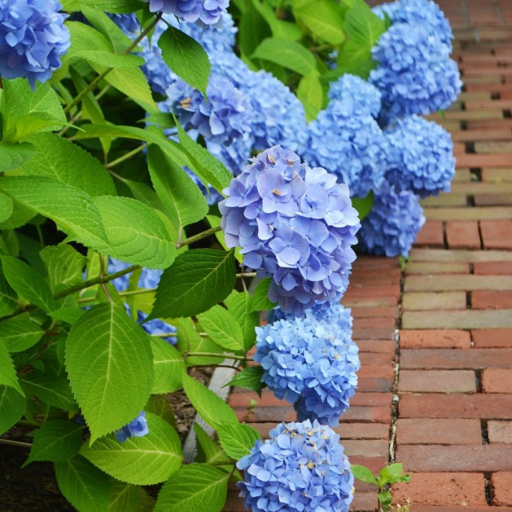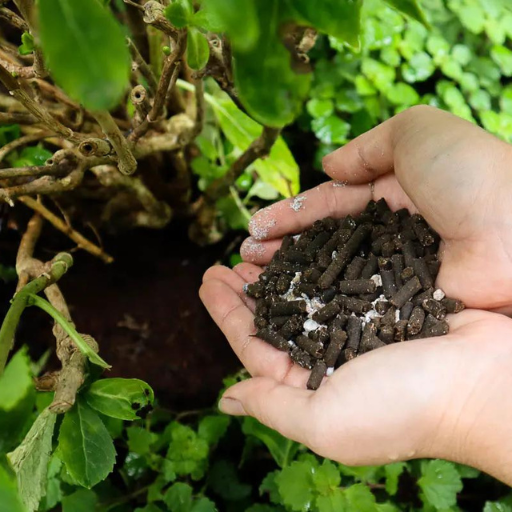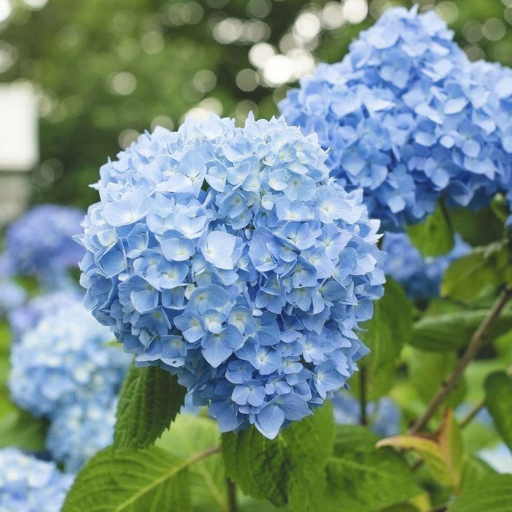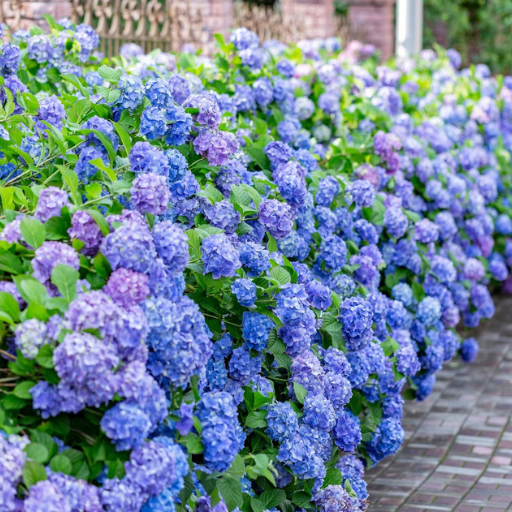Hydrangeas are beloved by gardeners for their large, vibrant blooms and lush foliage, making them a stunning addition to any garden landscape. However, achieving those beautiful blossoms and maintaining the overall health of your hydrangeas requires careful attention to their nutritional needs. This guide delves into the world of organic fertilizers, providing insights into how these natural solutions can enhance the growth, bloom quality, and longevity of your hydrangeas. Whether you are a seasoned gardener or a novice enthusiast, this article aims to equip you with the knowledge to select the best organic fertilizers, understand their benefits, and apply them effectively to ensure your hydrangeas thrive.
What Is the Best Fertilizer for Hydrangeas?

What to know about hydrangea fertilizer
Organic fertilizers are usually seen as superior for hydrangeas due to their natural composition and long-term benefits. They usually slowly release nutrients, thus ensuring that such elements as nitrogen, phosphorus, and potassium are available on a continuous basis. Common examples of organic choices include compost, well-rotted manure, fish emulsion and bone meal which not only improve soil but also enhance its structure and microbial activity which in turn leads to healthier root system growth plus more attractive blossoms. These fertilizers are eco-friendly; hence they do not encourage over-fertilization which would take place if synthetic chemicals were used.
Picking the Right Hydrangea Fertilizer
It’s important to look at what your plants require when selecting the right fertilizer for your hydrangeas.
- LOYAL: An organic fertilizer praised for having balanced nutrient composition with essential elements like nitrogen, phosphorus, and potassium that facilitate healthy growth and vibrant flowers. Moreover, it has microorganisms that boost soil health.
- Miracle-Gro Water Soluble Bloom Booster: This is an artificial fertilizer designed to maximize flowering especially by gardeners who prefer quick results. The formula has much phosphorous which is very critical in encouraging increased blooming for larger size flowers.
- Jobe’s Organics Fertilizer Spikes: If you want a slow release feeding option then go for these convenient spikes packed with items such as bone meal and composted manure that provide necessary nutrients while enhancing overall soil structure.
By choosing one of these top-rated fertilizers you will be able to feed your hydrangeas properly leading to vigorous growth and beautiful blooms. As directed by a manufacturer always observe changes in your crops’ appearance so as to adjust feeding accordingly.
Top-rated Hydrangea Fertilizers Based on Soil Type
The best product for your hydrangeas depends mainly on the kind of soils found in your garden. Some of the common soil types and their corresponding recommendations are listed below.
Sandy Soil:
- Espoma Holly-Tone: In sandy soils, this organic fertilizer is very effective because it helps to retain moisture and supplies a steady release of nutrients. It has an optimal balance of nitrogen, phosphorous, and potassium as well as beneficial microbes that help improve soil health.
Clay Soil:
- Dr. Earth Acid Lovers Organic and Natural Premium Fertilizer: For clay soil this fertilizer ensures that all the nutrients are effectively taken despite the tightness of the soil. Its formulation contains probiotics, beneficial soil microbes, and mycorrhizae for breaking up heavy clay compactedness as well as increasing air movement.
Loamy Soil:
- Jobe’s Organics All Purpose Granular Fertilizer: This all-purpose fertilizer goes well with loamy soils which have moderate texture and fertility levels. It has a balanced nutrient composition plus ingredients such as feather meal, bone meal and composted manure which help to maintain good soil structure and fertility.
Choosing a fertilizer that suits your own kind of soil will allow you to get the best possible growth for your hydrangeas in terms of blooming. Also take note always check on your garden’s specific characteristics through a soil test before fertilizing accordingly so as to ensure continued wellness for your plants.
How to Fertilize Hydrangeas for Optimal Growth?
Fertilizer Application Tips
- Timing: For optimal results, it is recommended to apply fertilizer in late spring to early summer when hydrangeas are about to sprout. Administer the first dose as soon as the plant begins producing new leaves and another one halfway through the growing season. Avoid fertilizing after August because it interferes with plant’s readiness for dormancy.
- Amount: Use the amount specified on the fertilizer package. Mostly, hydrangeas thrive on a balanced formula containing equal parts of nitrogen, phosphorus, and potassium (e.g., 10-10-10 or 14-14-14). Over-fertilizing might result in abundant foliage but no flowers; hence avoid applying more than what is indicated.
- Application Method: Spread compost around base of your hydrangea keeping it off from stems directly. Then gently rake into top soil layer before watering thoroughly thus allowing nutrients to trickle down root zone.
- Soil Testing: For effective gardening practice ascertain your garden soil nutrient levels and pH by conducting a soil test. This will assist you choose correct type of fertilizer together with any required amendments so as to optimize your soil conditions for growing hydrangeas.
Mulching and Watering: In addition, mulching around your hydrangeas help in conserving moisture in the soil while decomposing add organic matter it. Consistent watering throughout dry spells is important since this maintain uniformity in the degree of moisture within soil thus promoting nutrient uptake.
Frequency of Fertilizer Application
The frequency at which you apply fertilizer on your hydrangeas depends on how healthy they are as well as peculiarities of your ground. Usually, two or three doses during vegetation are good for them. The first feeding should be done at pre-sprouting stage whereas another one will be necessary just after leaves have grown out completely during midsummer. If need be, a third application can go into effect around July/August time frame. However, do not apply fertilizer after August so that the plant can get into the preparation process of dormancy. In order to avoid over-fertilizing, it is important to follow soil test results and adhere to guidelines on the fertilizer package.
Organic Versus Synthetic Fertilizers
When choosing between organic and synthetic fertilizers for your hydrangeas, it is necessary to understand their differences and advantages. Organic fertilizers are obtained from natural substances like compost, manure and bone meal. These nutrients are slowly released thereby improving the structure of soil as well as enhancing its long-term fertility with the help of helpful soil microorganisms. Organic alternatives have minimum pollution risks since they reduce chances of over-fertilization and nutrient runoff.
In contrast, synthetic fertilizers are made through chemical synthesis to provide plants with available nutrient supply instantly. They can be cheaper than organic types because of their precise ratios in terms of nutrients supplied. Nonetheless, there could be degradation in soils if artificial fertilizers are used without care leading also to polluted waters in some cases.
Finally, your choice between organic and synthetic fertilizers will depend on your gardening philosophy and specific needs for your hydrangeas. On the other hand; you may combine a small amount of each type so that immediate gains associated with chemical fertilizers will be enjoyed while at the same time keeping good soil conditions by adding organic matter
When Is the Best Time to Fertilize Your Hydrangeas?

Fertilizing in Early Spring
The ideal time to fertilize your hydrangeas is early spring when they start making new growth. By this stage, the plant is coming out of dormancy and can greatly benefit from a nutrient boost that will support strong growth and blooming. Use a balanced slow-release fertilizer meant for flowering shrubs. Apply the fertilizer around the base of the plant according to directions on the container. Also, you may need a second lighter application later in summer to maintain continuous bloomings. After applying fertilizers, irrigation should be done thoroughly so as to permit distribution of nutrients throughout soil.
Feeding Hydrangeas in Early Summer
To have your hydrangeas with all needed nutrients for them to grow well and produce flowers that are bright during the whole season is what feeding in them in early summer means. A balanced slow-release fertilizer or special bloom booster supporting flower development should be used; most commonly recommended composition is 10-4-10 or 12-4-8 NPK (nitrogen, phosphorus, potassium) ratio. Follow packaging instructions for proper application rates of fertilizers. The plants should be watered extensively after being applied with fertilizers thereby allowing penetration of nutrients into soil. This helps restore any lost nutrients consumed during spring flush and promotes continuous flowering.
Fertilizing During Blooming Season
Hydrangeas usually have vibrant blooms that require targeted feeding throughout their blooming season which is generally between midsummer and early fall. Use a bloom booster like 10-30-10 or similar formulas having high phosphorus content that induce blooming better than other types of fertilizer would do.Apply it according to instructions on the package without over-fertilizing because it can lead to damage of these plants.It’s important now for us to water our hydrangeas fully until they have absorbed sufficient amounts of biological elements though root burn must also be avoided by doing so.Furthermore, in this period of time, the hydrangeas should be provided with regular food so that they will not only look well but blossom more.
What Nutrients Do Hydrangeas Need?

Importance of Nitrogen, Phosphorus, and Potassium
Hydrangeas require a balanced supply of three nutrients that are important for their growth and production, namely nitrogen, phosphorous and potassium.
Nitrogen (N) is important in robust leafy growth and to have the green color which is healthy. It is vital to chlorophyll production and general health of plants.
Phosphorus (P) is crucial for root development but especially valuable for increasing the strength and number of flowers. It ensures that hydrangeas have enough energy to blossom by aiding flower or seed formation.
Potassium (K) strengthens plants against diseases and other environmental challenges by improving their health status as well as wellbeing. This helps the physiological processes such as water regulation, enzyme activation, photosynthesis etc.
To ensure healthy hydrangeas capable of producing plenty of beautiful flowers throughout blooming period one has to apply these elements in equal amounts.
Using Organic Fertilizers
Use of organic fertilizers on your hydrangea plant serves two purposes: provision of essential nutrients they need while still practicing sustainable gardening. They contain naturally occurring balance between nitrogen phosphorous potassium; as well as other micro nutrients that support over all plant’s health effects. Compost improves soil structure thereby enhancing aeration and water retention which directly improves hydranges’ roots system. Manure with high content of organic matter provide slow release of nutrients thus promote sustainable long term growth as well as bloom density. Fish emulsion has high nitrogen content hence increases foliage development. Thus they not only feed the plants but also improve soil fertility through fostering good microbe population hence reducing the needs for regular application chemical based fertilizers into your gardening system which keep you roses growing naturally with time.
Balancing Soil pH for Hydrangeas
Soil pH determines changes in color that occur on Hydrangea blooms making it an important factor to consider when seeking to balance its components for Hydrangeas. Acidic soils (pH below 6) are generally favorable for blue flowers in bigleaf hydrangea species (Hydrangea macrophylla), whereas alkaline soils (pH above 7) produce pink flowers. This discrepancy can be addressed through soil amendments that aim to adjust the pH. If you want to reduce the soil’s pH and make it more acidic, consider adding garden sulfur, aluminum sulfate or organic matter such as pine needles and coffee grounds. To increase the pH of your soil and make it more alkaline, you can add lime to your ground. Therefore, regular testing of your soil’s pH should be done using a kit from a local extension service or taking a sample to them in order to maintain the preferred pH level for hydrangeas. Changes ought to be made gradually so as not to upset the plants with abrupt variations.
How to Avoid Over-Fertilization and Fertilizer Burn?

Signs of Over-Fertilization
There are obvious signs of over-fertilization if you know what to look for. The most common signs in my experience include yellowing leaves, particularly at the margins and apexes. This condition is also known as “leaf scorch” due to excess nutrients that disrupt the natural plant processes. Another indication could be excessive growth with weak skinny stems resulting in high disease and pest susceptibility. You may also observe fertilizer salts building up on the soil surface making it crusty in texture. In severe cases, hydrangeas can show reduced blooming or sudden wilting. To avoid over-fertilizing, I recommend following closely the prescribed application rates of fertilizers and ensuring that there is a balanced nutrition which suits your particular soil requirements through regular soil testing, hence healthier and more vibrant hydrangeas.
How to Correct Over-Fertilization
When you suspect that your hydrangeas are suffering from over-fertilization, my first suggestion involves flushing the soil abundantly with water. This process assists in diluting and leaching excessive nutrients out of the root zone. Be sure to do this slowly so as not to saturate the soil causing additional stress to plants. Additionally, clearing any visible fertilizer salts from the topsoil can help ameliorate this problem. It becomes very important not to apply anymore additives until it has had time to recover fully. By closely monitoring these plants while at the same time practicing good cultural practices like proper watering and mulching will bring them back into health again for your hydrangea flowers growth Regular soil testing prevents reoccurrences while providing precise requirements for healthy plant-friendly fertilizations.
Long-Term Care and Maintenance
To maintain long-term health and colorful blooms for years, proper care should be taken on hydrangeas by carrying out some key practices Firstly constant watering is essential; a deep thorough watering once weekly is appreciated by hydrangeas but during dry spells it should be done more often. Mulching the base of plants helps to retain moisture and keep roots cool. In most instances, regular pruning is important for removing dead or infected wood, and shaping the plant; usually performed in late winter or early spring. Using a balanced slow-release fertilizer on your hydrangeas in spring can promote robust growths and flowering. However, caution must be exercised to avoid over-feeding as it may harm the plant. Moreover, pests’ control and diseases surveillance allows in prompt measures hence preventing minor problems from escalating into major ones. With such directions you will have lush healthy hydrangeas that will be the envy of neighbors year after year.
Frequently Asked Questions (FAQs)

Q: Should I go for granule or liquid fertilizer for my hydrangeas?
A: Granular and liquid fertilizers are both good for use although the former provides nutrient release over a long period while the latter offers immediate benefits. This choice depends on your garden’s needs as well as the type of fertilizer you select.
Q: What is the best N-P-K ratio for hydrangeas?
A: The ideal n-p-k ratio for hydrangeas is about 10-10-10 or something similar to balanced formulations. These contain enough nutrients that promote better growth of hydrangeas, healthier buds and blooms.
Q: How do I fertilize my hydrangeas?
A: To feed your plants with fertilizers, spread it around evenly all along the plant dripline ensuring you adhere to rates of application on the package. Ensure you water in the fertilizer so that it reaches deeper into the soil.
Q: Are there any kinds of hydrangea varieties that respond more to organic fertilizers?
A: The majority of hydrangea species such as climbing varieties and Limelight grow well when fed with organic fertilizers. Each variety might have slightly different requirements but generally speaking, organic fertilizers result in robust growth, blooms that pop out at you.
Q: Can too much fertilizer harm my hydrangeas?
A: Yes, over-fertilizing can damage these flowers. It is important to apply only small amounts as indicated on the container because excess nutrients can cause stunted growth, leaf scorching and reduced flowering.
Q: What are some additional things I can do to help my Hydrangeas grow healthy and bloom beautifully?
A: Besides applying appropriate organic fertilizer and pruning accurately make sure your Hydrangea has proper drainage, gets sunlight in right amounts and watering is done right. Many gardeners also put down mulch which helps keep moisturized soil conditions conducive for root development.






